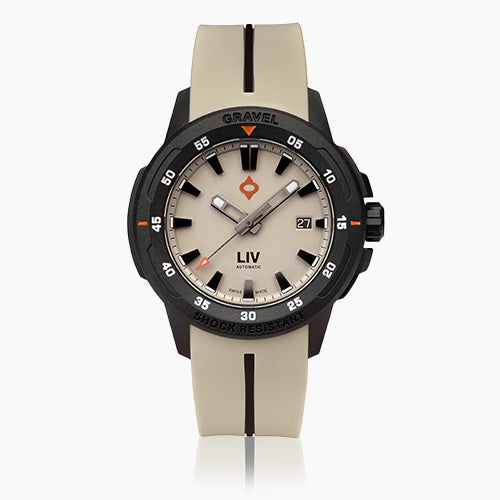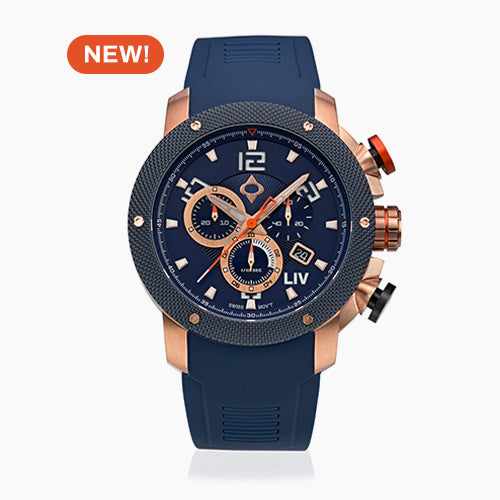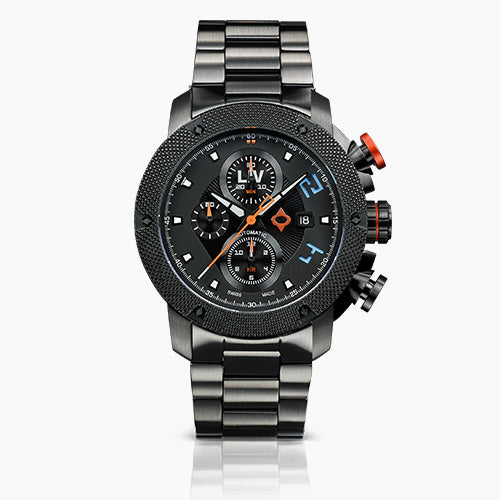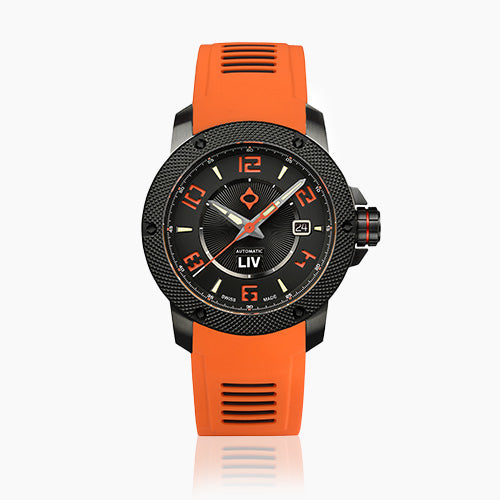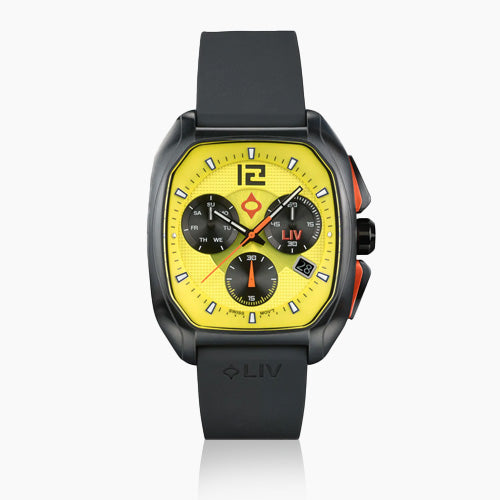
What Makes a Watch Movement Accurate & Reliable?
Share
WATCH MOVEMENTS ARE SOME OF THE MOST COMPLICATED MECHANISMS AROUND. SO HOW DO THEY STAY ON TIME?
The human body requires a heart to function, so a watch requires its movement. Essentially, it is the mechanism that makes a watch function. The movement (or caliber) facilitates the movement of the hands on a watch face and powers its various complications, such as the day/date or dual time display, alarms the watch might have, or the chronograph on a stopwatch.
This article will provide insight into the most critical factors that ensure an accurate and reliable movement. Please note that this article will focus on mechanical movements, given their greater intricacy and the inherent need for care compared to quartz movements.

CONSTRUCTION OF A MOVEMENT
A mechanical watch movement comprises various parts. The movement sits between two plates, namely the front plate, located just behind the watch face, and the back plate. The back plate can be a full plate to match the front plate, a ¾ plate, or a series of smaller plates or ‘bridges’ known as a bridge plate. These two plates provide easier access to the movement for repair or maintenance purposes.
The mainspring is the ‘powerhouse’ of the mechanical movement; it stores the needed energy via oscillated energy (i.e., in an automatic watch) or kinetic energy due to the manual winding of the crown for a manual or hand-wound watch.
The Gear train transmits this energy from the mainspring to the escapement, which comprises the escape wheel, the lever, and roller through a series of gears. Lever grips into the escape wheel determine the required flow of energy. These precise ‘fractions of energy’ determine the time that the watch will keep.
A watchmaker can precisely adjust the oscillation of the balance spring to attain the desired number of beats and, thus, precise time.
The dial train, also known as the hand-setting train, is a set of gears that finally transfers energy from the balance wheel to the hands of the watch. Reduction gears ensure that the minute hand turns faster than the hour hand does.
MATERIALS IN MOVEMENTS
A watch movement specifically comprises six principal components (as outlined in the section above):
- mainspring
- gear train
- escapement
- balance wheel
- drive train
- jewels
The earliest watchmakers in Germany, the UK, and Switzerland used precious metals and semi-precious jewels to make these components in movements. That explains why early watches are so valuable today; historical legacy and exquisite craftsmanship are not their only values - the precious metals and jewels in them are too.
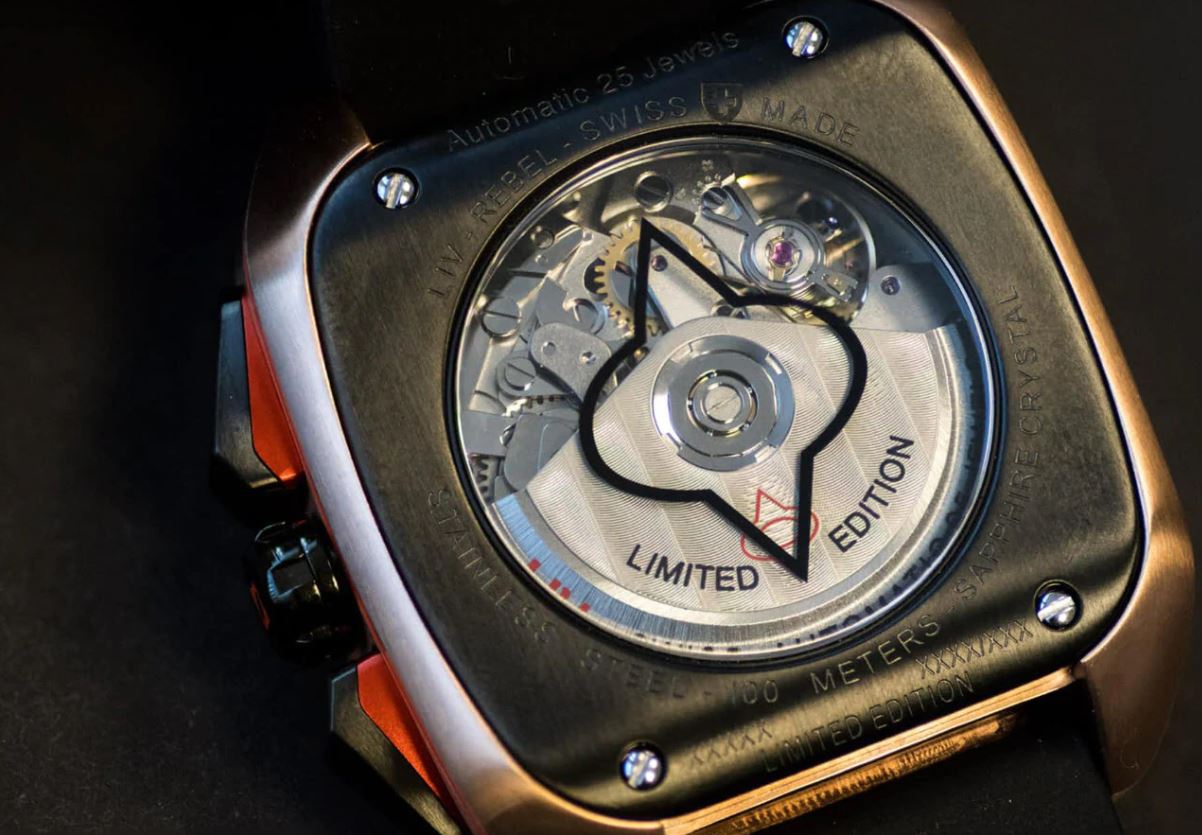
METALS IN MOVEMENTS
Early watchmakers extensively used nickel-plated brass because it was less expensive than precious metals and less corrosive than brass. For a long time, a movement’s mainspring was steel, which was challenging to cast uniformly. Later on, carbon steel was introduced, which could be very brittle and break easily.By the 1960s, new and far sturdier and less brittle alloys comprised of cobalt, chromium, nickel, iron, molybdenum, and manganese had replaced carbon steel. These alloys were also rust- and corrosion-resistant.
The metals used in most movements today have altered even more dramatically. The new millennium has seen the development of alternatives to metal components used in watch movements.
For example, many watchmakers have replaced metal parts within watch movements with silicon, including the ultra-sensitive mainspring. This synthetic material has several advantages over metal for watchmaking purposes, including being:
- harder;
- stronger;
- much lighter;
- temperature-resistant; and
- friction-resistant
Perhaps most importantly, silicon allows a movement to run at a higher frequency, which results in better time-keeping and, thus, a more accurate watch.
Titanium has also become more used in watchmaking, especially as it is very light. It is also as durable and corrosion-resistant as stainless steel. Titanium is used most often in dive watch models. However, it is also an expensive material, which explains why it is primarily used in the watch case.
The innovations in movement materials continue unabated. In 2018, Swatch Group and Audemars Piguet partnered to develop & introduce a new alloy and alternative to silicon called Nivachron. Being titanium-based means this alloy is as malleable as any metal alloy while also being shock and temperature-resistant, as well as non-magnetic.

JEWELS IN MOVEMENTS
Jewels are essential in a watch movement. They essentially provide load-bearing for elements within the movement that may be susceptible to wear and tear, such as the wheel trains and the escape lever.
The French chemist Auguste Verneuil is the man that revolutionized the jewels in watch movements. Verneuil, the son of a watchmaker, first made his groundbreaking discovery of making synthetic corundum in 1892. His technique was only published ten years later, in 1902. His ability to synthesize rubies and sapphires (both types of corundum) changed watchmaking profoundly.
The advent of synthetic jewels meant that movements could be made far more inexpensively. They could also be made more efficiently. There was also a tendency for genuine rubies to fissure easily, rendering them useless to a watchmaker were that to occur.
There was a reason why rubies and sapphires had been used in watchmaking: they are the second-hardest minerals. Only diamonds are harder. This made them ideal for the precision cutting required in making watch jewels - that is, when they didn’t fissure.

FINISHING
The term’ finishing’ in watchmaking refers to the array of often complex techniques that are performed on parts of the movement once produced by machines. Machining is not perfect, and so unsightly remnants thereof in a movement must be erased.
Finishing includes both the polishing and decorating of movement parts and can be done mechanically or by hand.
Today, machines can be adept at achieving high standards of finishing. However, for truly stunning finishing that can make a movement a miniature piece of art, handcrafted techniques remain supreme for high-end, luxury watches. The watchmaker’s hand achieves this with expertise and skill.
That is why ‘finishing’ in the handcrafting of movements can be seen as ‘the art of horological perfection.’
Above all else, finishing is about making a watch movement that much more beautiful, stylish, and, importantly, unique. This becomes especially necessary when even the highest-tech machines cannot match the precision of the human hand in certain watchmaking techniques. For example, certain angles needed in a watch movement that may be sharp or obtuse can only be performed by hand.
One such technique is anglage, which refers to the beveling or ‘chamfering’ of edges to the same width and angle, usually 45°. This technique is most often performed on bridges and plates within the movement. Other techniques include the intricate engraving of metal parts, or perlage, a high-end finish of overlapping circles, also known as circular-graining or ‘stippling.’

Finishing also has strong practical aspects to it. These aspects can include:
- Plating: This is not only pleasing to the eye (by giving movement parts their trademark ‘polished’ look) but also helps prevent corrosion of metal parts;
- Geneva stripes: These broad, straight stripes ground onto the movement for decorative purposes can also be practical in that they can help trap dust away from sensitive, moving parts of the mechanism
- Screw heating: This technique changes the color of steel screws to an alluring and beautiful royal blue and hardens the screws, thereby making them less likely to corrode.

SERVICING A WATCH MOVEMENT
The best way to service a quartz watch movement is by simply replacing its battery. Also, being less complex than mechanical movements is another reason why the maintenance of quartz movements is easier and less expensive. The relatively servicing of quartz watches is one of the leading reasons they have been so massively popular since the Japanese introduced them in the 1960s.
The Servicing of a mechanical watch movement may be more costly and require more care and planning. Mechanical movement parts can get dirty or corrode, and their lubricants can dry out. That is why they should be serviced every three to five years.
Servicing a mechanical watch movement has three stages: dis-assembly, cleaning and repair, and reassembly. The second stage can also include the needed lubrication/re-oiling of the movement.

Beyond the specialist labor in servicing an intricate watch movement, further costs possibly incurred in the servicing of a mechanical movement can include any parts replaced, as well as any refinishing that the watchmaker may deem necessary due to wear and tear.
DAY-TO-DAY WEAR
Here are a few simple things to remember when wearing your mechanical watch.
FOR AUTOMATIC WATCHES:
- You need not ever wind this watch unless you do not wear it daily or are very inactive when wearing it;
- If your automatic watch has stopped, turn the crown about 20 or 30 times until the second hand starts moving; and
- Ensure that you wind your stopped watch off your wrist and do so when level.

FOR MANUAL/SELF-WINDING WATCHES:
- Wind your watch only when it is off of your wrist;
- Ensure that your watch is level when winding. Doing so at an awkward angle can damage the gears in the movement, which is why you should not do so when wearing it;
- Do not over-wind your watch. A good rule of thumb is to stop winding when you feel resistance to the winding; and
- Remember to try winding your watch once a day.

FOR BOTH TYPES OF MECHANICAL WATCHES:
Look after your watch well, and your trusted timepiece can continue to be your pride and joy.
- You may need to consider investing in a watch winder, which you can read all about in a recent LIV Watches blog post;
- If your watch has a calendar complication, NEVER re-set the date if it shows any time between 9 p.m. and 2 a.m. Doing so can break the gear train’s ‘teeth,’ which can be expensive to repair. If in doubt about this, wind the watch forward until the next ‘date’ appears.
- Avoid submerging your watch in the water wherever possible, unless it is specifically a diving watch; and
- Avoid magnetic fields such as modems, iPads/tablets, and speakers.




